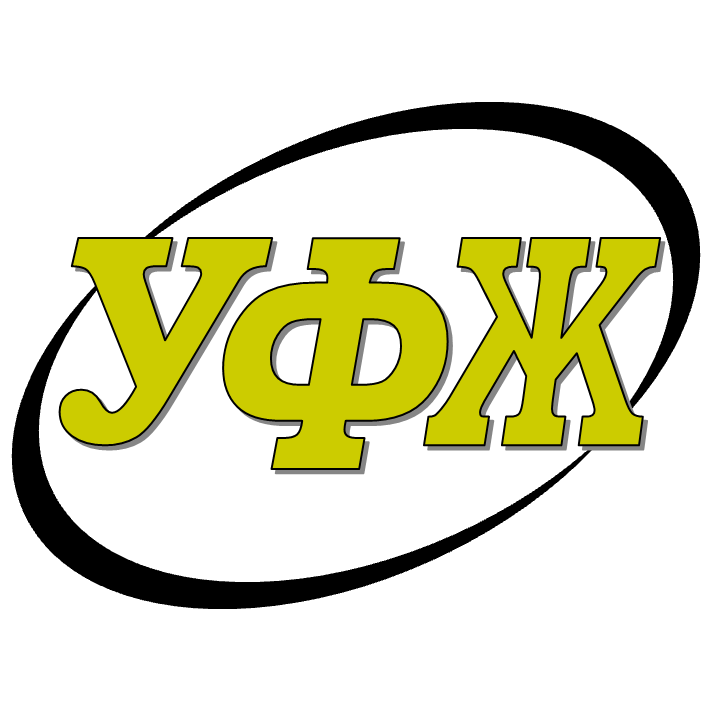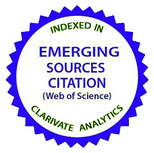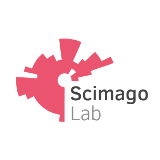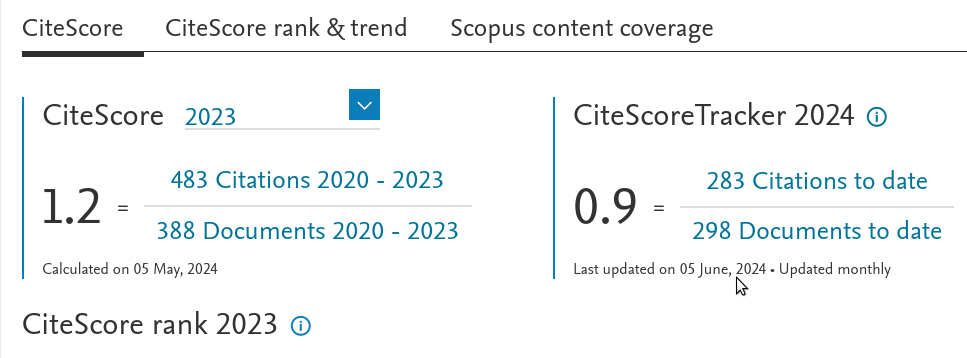Поверхні зі зниженою роботою виходу: проблеми створення та теоретичного опису. Огляд
DOI:
https://doi.org/10.15407/ujpe68.8.549Ключові слова:
поверхня, робота виходу, електронна спорiдненiсть, катод, дипольний шарАнотація
Дано огляд експериментальних робiт зi створення сучасних фотокатодiв чи ефективних катодiв для польової емiсiї зi зниженою роботою виходу або низькою/негативною електронною спорiдненiстю. Викладено теоретичнi моделi для опису зниження електронної спорiдненостi пiд впливом заряджених шарiв на поверхнi напiвпровiдника/дiелектрика.
Посилання
W.E. Spicer, A. Herrera-Gomes. Modern theory and applications of photocathodes. Proc. SPIE 2022, 18 (1993).
https://doi.org/10.1117/12.158575
A. Evtukh, H. Hartnagel, O. Yilmazoglu, H. Mimura, D. Pavlidis. Vacuum Nanoelectronic Devices: Novel Electron Sources and Applications (John Wiley and Sons, 2015).
https://doi.org/10.1002/9781119037989
Y. Zhou, P. Zhang. Theory of field emission from dielectric coated surfaces. Phys. Rev. Res. 2, 043439 (2020).
https://doi.org/10.1103/PhysRevResearch.2.043439
N.D. Lang, W. Kohn. Theory of metal surfaces: Work function. Phys. Rev. B 3, 1215 (1971).
https://doi.org/10.1103/PhysRevB.3.1215
K.M. O'Donnell, M.T. Edmonds, A. Tadich, L. Thomsen, A. Stacey, A. Schenk, C.I. Pakes, L. Ley. Extremely high negative electron affinity of diamond via magnesium adsorption. Phys. Rev. B 92, 035303 (2015).
https://doi.org/10.1103/PhysRevB.92.035303
M.C. James, F. Fogarty, R. Zulkharnay, N.A. Fox, P.W. May. A review of surface functionalisation of diamond for thermionic emission applications. Carbon 171, 532 (2021).
https://doi.org/10.1016/j.carbon.2020.09.019
R.Calish. Doping of diamond. Carbon 37, 781 (1999).
https://doi.org/10.1016/S0008-6223(98)00270-X
M.G. Nakhodkin, M.I. Fedorchenko. Interaction of oxygen and gadolinium with Si(100)-2×1. Formation of a system with a work function of 1 eV. Ukr. J. Phys. 60, 97 (2015).
https://doi.org/10.15407/ujpe60.02.0097
T.V. Afanasieva, A.G. Fedorus, A.M. Goriachko, A.G. Naumovets, I.M. Neporozhnii, D.V. Rumiantseva. Mesoscopic self-ordering in oxygen doped Ce films adsorbed on Mo(112). Surf. Sci. 705, 121766 (2021).
https://doi.org/10.1016/j.susc.2020.121766
H.A. Tahini, X. Tan, S.C. Smith. The origin of low workfunctions in OH terminated MXenes. Nanoscale 9, 7016 (2017).
https://doi.org/10.1039/C7NR01601H
F. Maier, J. Ristein, L. Ley. Electron affinity of plasmahydrogenated and chemically oxidized diamond (100) surfaces. Phys. Rev. B 64, 165411 (2001).
https://doi.org/10.1103/PhysRevB.64.165411
M. Khazaei, M. Arai, T. Sasaki, A. Ranjbar, Y. Liang, S. Yunoki. OH-terminated two-dimensional transition metal carbides and nitrides as ultralow work function materials. Phys. Rev. B 92, 075411 (2015).
https://doi.org/10.1103/PhysRevB.92.075411
E. Zojer, T.C. Taucher, O.T. Hofmann. The impact of dipolar layers on the electronic properties of organic/inorganic hybrid interfaces. Adv. Mater. Interfac. 6, 1900581 (2019).
https://doi.org/10.1002/admi.201900581
M.V. Strikha, A.M. Goriachko. A theoretical model for describing a reduction of the work function for a semiconductor/insulator under the influence of the surface charge double layer. Sensor. Elektron. Mikrosyst. Tekhnol. 19 (3), 23 (2022) (in Ukrainian).
https://doi.org/10.18524/1815-7459.2022.3.265293
M.V. Strikha, D.V. Antonyuk. Influence of adsorbed monolayers with an arbitrary concentration ratio between opposite charges on the electron affinity of semiconductor. Sensor. Elektron. Mikrosyst. Tekhnol. 20 (1), 4 (2023) (in Ukrainian).
https://doi.org/10.18524/1815-7459.2023.1.275941
M.V. Strikha, D.V. Antonyuk A theoretical model for estimating the work function of MXenes with hydroxyl termination. Fiz. Khim. Tverd. Tila 23 (1), 102 (2023) (in Ukrainian).
https://doi.org/10.15330/pcss.24.1.102-105
S. Halas, T. Durakiewicz. Is work function a surface or a bulk property? Vacuum 85, 486 (2010).
https://doi.org/10.1016/j.vacuum.2010.01.017
A. Kahn. Fermi level, work function and vacuum level. Mater. Horiz. 3, 7 (2016).
https://doi.org/10.1039/C5MH00160A
M. Yoshitake. Work Function and Band Alignment of Electrode Materials (Springer Japan KK, 2021).
https://doi.org/10.1007/978-4-431-56898-8
Ye.S. Kryachko, Ye.Yu. Remeta. Density functional theory in atomic physics. Ukr. J. Phys. 9, 38 (2014).
W. Kohn, L.J. Sham. Self-consistent equations including exchange and correlation effects. Phys. Rev. 140, A1133 (1965).
https://doi.org/10.1103/PhysRev.140.A1133
F. Giustino. Materials Modelling using Density Functional Theory (Oxford University Press, 2014).
R. Jacobs, D. Morgan, J. Booske. Work function and surface stability of tungsten-based thermionic electron emission cathodes. APL Materials 5, 116105 (2017).
https://doi.org/10.1063/1.5006029
S. Kim, M.Y. Lee, S. Lee, S.-H. Jhi. Super low work function of alkali-metal-adsorbed transition metal dichalcogenides. J. Phys.: Condens. Matter 29, 315702 (2017).
https://doi.org/10.1088/1361-648X/aa79bd
R. Tran, X.-G. Li, J.H. Montoya, D. Winston, K.A. Persson, S.P. Ong. Anisotropic work function of elemental crystals. Surf. Sci. 687, 48 (2019).
https://doi.org/10.1016/j.susc.2019.05.002
R.I.G. Hughes. Theoretical practice: the Bohm-Pines quartet. Perspect. Sci. 14, 457 (2006).
https://doi.org/10.1162/posc.2006.14.4.457
N.D. Lang, W. Kohn. Theory of metal surfaces: Charge density and surface energy. Phys. Rev. B 1, 4555 (1970).
https://doi.org/10.1103/PhysRevB.1.4555
I. Brodie, S.H. Chou, H. Yuan. A general phenomenological model for work function. Surf. Sci. 625, 112 (2014).
https://doi.org/10.1016/j.susc.2014.03.002
S.H. Chou, J. Voss, I. Bargatin, A. Vojvodic, R.T. Howe, F. Abild-Pedersen. Orbital-overlap model for minimal work functions of cesiated metal surfaces. J. Phys. Condens. Matter. 24, 445007 (2012).
https://doi.org/10.1088/0953-8984/24/44/445007
G.P. Peka, V.I. Strikha. Surface and Contact Phenomena in Semiconductors (Lybid', 1992) (in Ukrainian).
V.A. Smyntyna. Physico-Chemical Phenomena at the Solid Surface (Astroprynt, 2009) (in Ukrainian).
R.J. Nemanich, P.K. Baumann, M.C. Benjamin, O.-H. Nam, A.T. Sowers, B.L. Ward, H. Ade, R.F. Davis. Electron emission properties of crystalline diamond and III-nitride surfaces. Appl. Surf. Sci. 130-132, 694 (1998).
https://doi.org/10.1016/S0169-4332(98)00140-8
A.M. Goriachko, M.V. Strikha. Nanostructured SiC as a promising material for the cold electron emitters. Semicond. Phys. Quant. Electron. Optoelectron. 24, 355 (2021).
https://doi.org/10.15407/spqeo24.04.355
M. Naguib, M. Kurtoglu, V. Presser, J. Lu, J. Niu, M. Heon, L. Hultman, Y. Gogotsi, M. W Barsoum. Two-dimensional nanocrystals produced by exfoliation of Ti3AlC2. Adv. Mater. 23, 4248 (2011).
https://doi.org/10.1002/adma.201102306
M.D. Firouzjaei, M. Karimiziarani, H. Moradkhani, M. Elliott, B. Anasori. MXenes: The two-dimensional influencers. Mater. Today Adv. 13, 100202 (2022).
https://doi.org/10.1016/j.mtadv.2021.100202
X. Jiang, A.V. Kuklin, A. Baev, Y. Ge, H. Agren, H. Zhang, P.N. Prasad. Two-dimensional MXenes: From morphological to optical, electric, and magnetic properties and applications. Phys. Rep. 848, 1 (2020).
https://doi.org/10.1016/j.physrep.2019.12.006
T.C. Leung, C.L. Kao, W.S. Su, Y.J. Feng, C.T. Chan. Relationship between surface dipole, work function and charge transfer: Some exceptions to an established rule. Phys. Rev. B 68, 195408 (2003).
https://doi.org/10.1103/PhysRevB.68.195408
T. Schultz, N.C. Frey, K. Hantanasirisakul, S. Park, S.J. May, V.B. Shenoy, Y. Gogotsi, N. Koch. Surface termination dependent work function and electronic properties of Ti3C2Tx Mxene. Chem. Mater. 31, 6590 (2019).
https://doi.org/10.1021/acs.chemmater.9b00414
O.C. Olawole, D.K. De, O.F. Olawole, R. Lamba, E.S. Joel, S.O. Oyedepo, A.A. Ajayi, O.A. Adegbite, F.I. Ezema, S. Naghdi, T.D. Olawole, O.O. Obembe, K.O. Oguniran. Progress in the experimental and computational methods of work function evaluation of materials: A review. Helyon 8, e11030 (2022).
https://doi.org/10.1016/j.heliyon.2022.e11030
K.L. Jensen. Introduction to the Physics of Electron Emission (John Wiley & Sons, Ltd., 2018).
P.D. Swartzentruber, T.J. Balka, M.P. Effgenb. Correlation between microstructure and thermionic electron emission from Os-Ru thin films on dispenser cathodes. J. Vac. Sci. Technol. A 32, 040601 (2014).
https://doi.org/10.1116/1.4876337
A. Sherehiy, S. Dumpala, A. Safir, D. Mudd, I. Arnold, R.W. Cohn, M.K. Sunkara, G.U. Sumanasekera. Thermionic emission properties and the work function determination of arrays of conical carbon nanotubes. Diamond Rel. Mater. 34, 1 (2013).
https://doi.org/10.1016/j.diamond.2013.01.007
T.C. Back, A.K. Schmid, S.B. Fairchild, J.J. Boeckl, M. Cahay, F. Derkink, G. Chen, A. Sayir. Work function characterization of directionally solidified LaB6-VB2 eutectic. Ultramicroscopy 183, 67 (2017).
https://doi.org/10.1016/j.ultramic.2017.05.006
A. Bellucci, S. Orlando, M. Girolami, M. Mastellone, V. Serpente, B. Paci, A. Generosi, A. Mezzi, S. Kaciulis, R. Polini, D.M. Trucchi. Aluminum (Oxy)nitride thin films grown by fs-PLD as electron emitters for thermionic applications. AIP Conf. Proc. 2416, 020004 (2021).
https://doi.org/10.1063/5.0068496
L. Lin, R. Jacobs, D. Chen, V. Vlahos, O. Lu-Steffes, J.A. Alonso, D. Morgan, J. Booske. Demonstration of low work function perovskite SrVO3 using thermionic electron emission. Adv. Funct. Mater. 32, 2203703 (2022).
https://doi.org/10.1002/adfm.202203703
Y.C. Gerstenmaier, G. Wachutka. Thermionic emission laws for general electron dispersion relations and band structure data. J. Appl. Phys. 125, 215105 (2019).
https://doi.org/10.1063/1.5086293
Y.S. Ang, L. Cao, L.K. Ang. Physics of electron emission and injection in two-dimensional materials: Theory and simulation. InfoMat 3, 502 (2021).
https://doi.org/10.1002/inf2.12168
D.K. De, O.C. Olawole. A three-dimensional model for thermionic emission from graphene and carbon nanotube. J. Phys. Commun. 3, 015004 (2019).
https://doi.org/10.1088/2399-6528/aaf281
O.C. Olawole, D.K. De, S.O. Oyedepo, F.I. Ezema. Mathematical models for thermionic emission current density of graphene emitter. Sci. Rep. 11, 22503 (2021).
https://doi.org/10.1038/s41598-021-01546-2
J.L. Domenech-Garret, S.P. Tierno, L. Conde. Nonequilibrium thermionic electron emission for metals at high temperatures. J. Appl. Phys. 118, 074904 (2015).
https://doi.org/10.1063/1.4929150
P.A. Andreson. A new technique for preparing monocrystalline metal surfaces for work function study. The work function of Ag(100). Phys. Rev. 59, 1034 (1941).
https://doi.org/10.1103/PhysRev.59.1034
A. Sabik, F. Go lek, G. Antczak. Note: Work function change measurement via improved Anderson method. Rev. Sci. Instrum. 86, 056111 (2015).
https://doi.org/10.1063/1.4921776
T. Wagner, G. Antczak, M. Gy¨or¨ok, A. Sabik, A. Volokitina, F. Go lek, P. Zeppenfeld. Attenuation of photoelectron emission by a single organic layer. ACS Appl. Mater. Interf. 14, 23983 (2022).
https://doi.org/10.1021/acsami.2c02996
T. Afanasieva, A.G. Fedorus, A.G. Naumovets, D. Rumiantsev. Coadsorbed oligolayers of beryllium and oxygen on molybdenum (112) surface: Formation and chemical composition, atomic structure and evaporation. Surf. Sci. 682, 14 (2019).
https://doi.org/10.1016/j.susc.2018.12.010
T. Afanasieva, A.G. Fedorus, D. Rumiantsev, I.N. Yakovkin. Honeycomb BeO monolayer on the Mo(112) surface: LEED and DFT study. Appl. Surf. Sci. 428, 815 (2018).
https://doi.org/10.1016/j.apsusc.2017.09.209
A.G. Fedorus, A.A. Mitryaev, A.G. Naumovets. Interaction of oxygen with submonolayer beryllium films on Mo(112). Eur. Phys. J. Appl. Phys. 68, 21302 (2014).
https://doi.org/10.1051/epjap/2014140339
A.G. Fedorus, A.A. Mitryaev, A.G. Naumovets. Beryllium overlayers on Mo(112) and Mo(011) surfaces. Surf. Sci. 606, 580 (2012).
https://doi.org/10.1016/j.susc.2011.11.017
A.A. Mitryaev, A.G. Naumovets, A.G. Fedorus. Surface alloy formation and two-dimensional vitrification in adsorbed monolayers on molybdenum (112) surfaces. Low Temp. Phys. 36, 677 (2010).
https://doi.org/10.1063/1.3490832
A.G. Fedorus, A.A. Mitryaev, A.G. Naumovets. Irreversible structure transitions in Gd monolayers on Mo(112). Eur. Phys. J. B 71, 47 (2009).
https://doi.org/10.1140/epjb/e2009-00285-1
J.W. Kim, A. Kim. Absolute work function measurement by using photoelectron spectroscopy. Curr. Appl. Phys. 31, 52 (2021).
https://doi.org/10.1016/j.cap.2021.07.018
J.E. Whitten. Ultraviolet photoelectron spectroscopy: Practical aspects and best practices. Appl. Surf. Sci. Adv. 13, 100384 (2023).
https://doi.org/10.1016/j.apsadv.2023.100384
A.M. Shing, Y. Tolstova, N.S. Lewis, H.A. Atwater. Effects of surface condition on the work function and valence-band position of ZnSnN2. Appl. Phys. A 123, 735 (2017).
https://doi.org/10.1007/s00339-017-1341-3
H. Yamaguchi, R. Yusa, G. Wang, M.T. Pettes, F. Liu, Y. Tsuda, A. Yoshigoe, T. Abukawa, N.A. Moody, S. Ogawa. Work function lowering of LaB6 by monolayer hexagonal boron nitride coating for improved photo- and thermionic-cathodes. Appl. Phys. Lett. 122, 141901 (2023).
https://doi.org/10.1063/5.0142591
A. Mezzi, P. Soltani, S. Kaciulis, A. Bellucci, M. Girolami, M. Mastellone, D.M. Trucchi. Investigation of work function and chemical composition of thin films of borides and nitrides. Surf. Interf. Anal. 50, 1138 (2018).
https://doi.org/10.1002/sia.6442
M.-H. Mikkel¨a, K. J¨ank¨al¨a, M. Huttula, O. Bj¨orneholm, M. Tchaplyguine. Free silver nanoparticles doped by potassium: Work-function change in experiment and theory. J. Chem. Phys. 154, 234708 (2021).
https://doi.org/10.1063/5.0052101
E. Aydin, J.K. El-Demellawi, E. Yarali, F. Aljamaan, S. Sansoni, A. Rehman, G. Harrison, J. Kang, A. El Labban, M. De Bastiani, A. Razzaq, E. Van Kerschaver, T.G. Allen, O.F. Mohammed, T. Anthopoulos, H.N. Alshareef, S. De Wolf. Scaled deposition of Ti3C2Tx MXene on complex surfaces: Application assessment as rear electrodes for silicon heterojunction solar cells. ACS Nano 16, 2419 (2022).
https://doi.org/10.1021/acsnano.1c08871
L.-˚A. N¨aslund, M.-H. Mikkel¨a, E. Kokkonen, M. Magnuson. Chemical bonding of termination species in 2D carbides investigated through valence band UPS/XPS of Ti3C2Tx Mxene. 2D Materials 8, 045026 (2021).
https://doi.org/10.1088/2053-1583/ac1ea9
T. Schultz, P. B¨armann, E. Longhi, R. Meena, Y. Geerts, Y. Gogotsi, S. Barlow, S.R. Marder, T. Petit, N. Koch. Work function and energy level alignment tuning at Ti3C2Tx MXene surfaces and interfaces using (metal-)organic donor/acceptor molecules. Phys. Rev. Mater. 7, 045002 (2023).
https://doi.org/10.1103/PhysRevMaterials.7.045002
V. Dose. VUV isochromat spectroscopy. Appl. Phys. 14, 117 (1977).
https://doi.org/10.1007/BF00882639
H. Yoshida. Principle and application of low energy inverse photoemission spectroscopy: A new method for measuring unoccupied states of organic semiconductors. J. Electr. Spectrosc. Rel. Phenom. 204, 116 (2015).
https://doi.org/10.1016/j.elspec.2015.07.003
H. Yoshida. Note: Low energy inverse photoemission spectroscopy apparatus. Rev. Sci. Instrum. 85, 016101 (2014).
https://doi.org/10.1063/1.4860055
H. Yoshida. Near-ultraviolet inverse photoemission spectroscopy using ultra-low energy electrons. Chem. Phys. Lett. 539-540, 180 (2012).
https://doi.org/10.1016/j.cplett.2012.04.058
T. Hadamek, S. Rangan, J. Viereck, D. Shin, A.B. Posadas, R.A. Bartynski, A.A. Demkov. Stoichiometry, band alignment, and electronic structure of Eu2O3 thin films studied by direct and inverse photoemission: A reevaluation of the electronic band structure. J. Appl. Phys. 127, 074101 (2020).
https://doi.org/10.1063/1.5139227
M. Terashima, T. Miyayama, T. Shirao, H.W. Mo, Y. Hatae, H. Fujimoto, K. Watanabe. The electronic band structure analysis of OLED device by means of in situ LEIPS and UPS combined with GCIB. Surf. Interf. Anal. 1, 5 (2020).
https://doi.org/10.1384/jsa.27.34
K. Kanai, T. Inoue, T. Furuichi, K. Shinoda, T. Iwahashi, Y. Ouchi. Electronic structure of n-cycloparaphenylenes directly observed by photoemission spectroscopy. Phys. Chem. Chem. Phys. 23, 8361 (2021).
https://doi.org/10.1039/D1CP00625H
B. Voigtl¨ander. Scanning Probe Microscopy - Atomic Force Microscopy and Scanning Tunneling Microscopy (Springer-Verlag, 2015).
https://doi.org/10.1007/978-3-662-45240-0
E. Meyer, R. Bennewitz, H.J. Hug. Scanning Probe Microscopy - The Lab on a Tip (Springer Nature Switzerland AG, 2021).
https://doi.org/10.1007/978-3-030-37089-3
J. Schwenk, S. Kim, J. Berwanger, F. Ghahari, D. Walkup, M.R. Slot, S.T. Le, W.G. Cullen, S.R. Blankenship, S. Vranjkovic, H.J. ug, Y. Kuk, F.J. Giessibl, J.A. Stroscio. Achieving μeV tunneling resolution in an in-operando scanning tunneling microscopy, atomic force microscopy, and magnetotransport system for quantum materials research. Rev. Sci. Instrum. 91, 071101 (2020).
https://doi.org/10.1063/5.0005320
J. Hieulle, S. Luo, D.-Y. Son, A. Jamshaid, C. Stecker, Z. Liu, G. Na, D. Yang, R. Ohmann, L.K. Ono, L. Zhang, Y. Qi. Imaging of the atomic structure of all-inorganic halide perovskites. J. Phys. Chem. Lett. 11, 818 (2020).
https://doi.org/10.1021/acs.jpclett.9b03738
B. Ji, E. Rabani, A.L. Efros, R. Vaxenburg, O. Ashkenazi, D. Azulay, U. Banin, O. Millo. Dielectric confinement and excitonic effects in two-dimensional nanoplatelets. ACS Nano 14, 8257 (2020).
https://doi.org/10.1021/acsnano.0c01950
J. Yamaguchi, H. Hayashi, H. Jippo, A. Shiotari, M. Ohtomo, M. Sakakura, N. Hieda, N. Aratani, M. Ohfuchi, Y. Sugimoto, H. Yamada, S. Sato. Small bandgap in atomically precise 17-atom-wide armchair-edged graphene nanoribbons. Nature Commun. Mater. 1, 36 (2020).
https://doi.org/10.1038/s43246-020-0039-9
S. Khatun, A. Banerjee, A.J. Pal. Nonlayered tellurene as an elemental 2D topological insulator: Experimental evidence from scanning tunneling spectroscopy. Nanoscale 11, 3591 (2019).
https://doi.org/10.1039/C8NR09760G
B. P'ecz, G. Nicotra, F. Giannazzo, R. Yakimova, A. Koos, A. Kakanakova-Georgieva. Indium nitride at the 2D limit. Adv. Mater. 33, 2006660 (2021).
https://doi.org/10.1002/adma.202006660
C. Murray, W. Jolie, J.A. Fischer, J. Hall, C. van Efferen, N. Ehlen, A. Gr¨uneis, C. Busse, T. Michely. Comprehensive tunneling spectroscopy of quasifreestanding MoS2 on graphene on Ir(111). Phys. Rev. B 99, 115434 (2019).
https://doi.org/10.1103/PhysRevB.99.115434
A. Goriachko, P.V. Melnik, A. Schyrba, S.P. Kulyk, M.G. Nakhodkin. Initial stages of Bi/Ge(111) interface formation: A detailed STM study. Surf. Sci. 605, 1771 (2011).
https://doi.org/10.1016/j.susc.2011.06.004
A. Goriachko, A. Schyrba, P.V. Melnik, M.G. Nakhodkin. Bismuth growth on Ge(111): Evolution of morphological changes from nanocrystals to films. Ukr. J. Phys. 59, 805 (2014).
https://doi.org/10.15407/ujpe59.08.0805
W. Melitz, J. Shena, A.C. Kummel, S. Lee. Kelvin probe force microscopy and its application. Surf. Sci. Rep. 66, 1 (2011).
https://doi.org/10.1016/j.surfrep.2010.10.001
K. M¨uller, A. Goryachko, Y. Burkov, C. Schwiertz, M. Ratzke, J. K¨oble, J. Reif, D. Schmeißer. Scanning Kelvin probe and photoemission electron microscopy of organic source-drain structures. Synth. Metal. 146, 377 (2004).
https://doi.org/10.1016/j.synthmet.2004.08.022
K. M¨uller, Y. Burkov, D. Mandal, K. Henkel, I. Paloumpa, A. Goryachko, D. Schmeißer. Microscopic and spectroscopic characterization of interfaces and dielectric layers for OFET devices. Phys. Status Solidi A 205, 600 (2008).
https://doi.org/10.1002/pssa.200723424
D. Wrana, K. Cie'slik, W. Belza, C. Rodenb¨ucher, K. Szot, F. Krok. Kelvin probe force microscopy work function characterization of transition metal oxide crystals under ongoing reduction and oxidation. Beilstein J. Nanotechnol. 10, 1596 (2019).
https://doi.org/10.3762/bjnano.10.155
H.-C. Fu, V. Ramalingam, H. Kim, C.-H. Lin, X. Fang, H.N. Alshareef, J.-H. He. MXene-contacted silicon solar cells with 11.5% efficiency. Adv. Energ. Mater. 9, 1900180 (2019).
https://doi.org/10.1002/aenm.201900180
W. Ki, X. Hei, H.T. Yi, W. Liu, S.J. Teat, M. Li, Y. Fang, V. Podzorov, E. Garfunkel, J. Li. Two-dimensional copper iodide-based inorganic-organic hybrid semiconductors: Synthesis, structures, and optical and transport properties. Chem. Mater. 33, 5317 (2021).
https://doi.org/10.1021/acs.chemmater.1c01421
J. Shakya, S. Kumar, D. Kanjilal, T. Mohanty. Work function modulation of molybdenum disulfde nanosheets by introducing systematic lattice strain. Nature Sci. Rep. 7, 9576 (2017).
https://doi.org/10.1038/s41598-017-09916-5
P.D. Swartzentruber, M.J. Detisch, T.J. Balka. Composition and work function relationship in Os-Ru-W ternary alloys. J. Vac. Sci. Technol. A 33, 021405 (2015).
https://doi.org/10.1116/1.4905499
O.T. Hofmann; J.-C. Deinert; Y. Xu; P. Rinke; J. St¨ahler; M. Wolf; M. Scheffler. Large work function reduction by adsorption of a molecule with a negative electron affinity: Pyridine on ZnO(1010). J. Chem. Phys. 139, 174701 (2013).
https://doi.org/10.1063/1.4827017
A. Asyuda, M. Gartner, X. Wan, I. Burkhart, T. Saßmannshausen, A. Terfort, M. Zharnikov. Self-assembled monolayers with embedded dipole moments for work function engineering of oxide substrates. J. Phys. Chem. C 124, 8775 (2020).
https://doi.org/10.1021/acs.jpcc.0c00482
Y. Zhou, C. Fuentes-Hernandez, J. Shim, J. Meyer, A.J. Giordano, H. Li, P. Winget, T. Papadopoulos, H. Cheun, J. Kim, M. Fenoll, A. Dindar, W. Haske, E. Najafabadi, T.M. Khan, H. Sojoudi, S. Barlow, S. Graham, J.-L. Br'edas, S.R. Marder, A. Kahn, B. Kippelen. A universal method to produce low-work function electrodes for organic electronics. Science 336, 327 (2012).
https://doi.org/10.1126/science.1218829
K.J. Rietwyk, D.A. Keller, A. Ginsburg, H.-N. Barad, M. Priel, K. Majhi, Z. Yan, S. Tirosh, A.Y. Anderson, L. Ley, A. Zaban. Universal work function of metal oxides exposed to air. Adv. Mater. Interf. 6, 1802058 (2019).
https://doi.org/10.1002/admi.201802058
G. Gaertner, D. den Engelsen, Hundred years anniversary of the oxide cathode - A historical review. Appl. Surf. Sci. 251, 24 (2005).
https://doi.org/10.1016/j.apsusc.2005.03.214
H. Yuan, S. Chang, I. Bargatin, N.C. Wang, D.C. Riley, H. Wang, J.W. Schwede, J. Provine, E. Pop, Z.-X. Shen, P.A. Pianetta, N.A. Melosh, R.T. Howe. Engineering ultra-low work function of graphene. Nano Lett. 15, 6475 (2015).
https://doi.org/10.1021/acs.nanolett.5b01916
F. Jin, A. Miruko, D. Litt, K. Zhou. Functionalized carbon nanotubes for thermionic emission and cooling applications. J. Vac. Sci. Technol. A 40, 013415 (2022).
https://doi.org/10.1116/6.0001467
M.C. James, M. Cattelan, N.A. Fox, R.F. Silva, R.M. Silva, P.W. May. Experimental studies of electron affinity and work function from aluminium on oxidised diamond (100) and (111) surfaces. Phys. Status Solidi B 258, 2100027 (2021).
https://doi.org/10.1002/pssb.202100027
F. Fogarty, N.A. Fox, P.W. May. Experimental studies of electron affinity and work function from titanium on oxidised diamond (100) surfaces. Funct. Diamond 2, 103 (2022).
https://doi.org/10.1080/26941112.2022.2122733
S. Ullah, G. Wan, C. Kouzios, C. Woodgate, M. Cattelan, N. Fox. Structure and electronic properties of tin monoxide (SnO) and lithiated SnO terminated diamond (100) and its comparison with lithium oxide terminated diamond. Appl. Surf. Sci. 559, 149962 (2021).
https://doi.org/10.1016/j.apsusc.2021.149962
P. Schindler, D.C. Riley, I. Bargatin, K. Sahasrabuddhe, J.W. Schwede, S. Sun, P. Pianetta, Z.-X. Shen, R.T. Howe, N.A. Melosh. Surface photovoltage-induced ultralow work function material for thermionic energy converters. ACS Energ. Lett. 4, 2436 (2019).
https://doi.org/10.1021/acsenergylett.9b01214
Y. Yu, D. Lee, B. Jeong. The dependence of the work function of Pt(111) on surface carbon investigated with near ambient pressure X-ray photoelectron spectroscopy. Appl. Surf. Sci. 607, 155005 (2023).
https://doi.org/10.1016/j.apsusc.2022.155005
T. Yamada, T. Masuzawa, H. Mimura, K. Okano. Electron emission from conduction band of heavily phosphorus doped diamond negative electron affinity surface. J. Phys. D 49, 045102 (2016).
https://doi.org/10.1088/0022-3727/49/4/045102
S. Ullah, N. Fox. Modification of the surface structure and electronic properties of diamond (100) with tin as a surface termination: A density functional theory study. J. Phys. Chem. C 125, 25165 (2021).
https://doi.org/10.1021/acs.jpcc.1c05973
M.T. Greiner, L. Chai, M.G. Helander, W.-M. Tang, Z.-H. Lu. Transition metal oxide work functions: The influence of cation oxidation state and oxygen vacancies. Adv. Funct. Mater. 22, 4557 (2012).
https://doi.org/10.1002/adfm.201200615
K. Akada, S. Obata, K. Saiki. Work function lowering of graphite by sequential surface modifications: Nitrogen and hydrogen plasma treatment. ACS Omega 4, 16531 (2019).
https://doi.org/10.1021/acsomega.9b02208
S. Naghdi, G. Sanchez-Arriaga, K.Y. Rhee. Tuning the work function of graphene toward application as anode and cathode. J. Alloy. Compd. 805, 1117 (2019).
Downloads
Опубліковано
Як цитувати
Номер
Розділ
Ліцензія
Ліцензійний Договір
на використання Твору
м. Київ, Україна
Відповідальний автор та співавтори (надалі іменовані як Автор(и)) статті, яку він (вони) подають до Українського фізичного журналу, (надалі іменована як Твір) з одного боку та Інститут теоретичної фізики імені М.М. Боголюбова НАН України в особі директора (надалі – Видавець) з іншого боку уклали даний Договір про таке:
1. Предмет договору.
Автор(и) надає(ють) Видавцю безоплатно невиключні права на використання Твору (наукового, технічного або іншого характеру) на умовах, визначених цим Договором.
2. Способи використання Твору.
2.1. Автор(и) надає(ють) Видавцю право на використання Твору таким чином:
2.1.1. Використовувати Твір шляхом його видання в Українському фізичному журналі (далі – Видання) мовою оригіналу та в перекладі на англійську (погоджений Автором(ами) і Видавцем примірник Твору, прийнятого до друку, є невід’ємною частиною Ліцензійного договору).
2.1.2. Переробляти, адаптувати або іншим чином змінювати Твір за погодженням з Автором(ами).
2.1.3. Перекладати Твір у випадку, коли Твір викладений іншою мовою, ніж мова, якою передбачена публікація у Виданні.
2.2. Якщо Автор(и) виявить(лять) бажання використовувати Твір в інший спосіб, як то публікувати перекладену версію Твору (окрім випадку, зазначеного в п. 2.1.3 цього Договору); розміщувати повністю або частково в мережі Інтернет; публікувати Твір в інших, у тому числі іноземних, виданнях; включати Твір як складову частину інших збірників, антологій, енциклопедій тощо, то Автор(и) мають отримати на це письмовий дозвіл від Видавця.
3. Територія використання.
Автор(и) надає(ють) Видавцю право на використання Твору способами, зазначеними у п.п. 2.1.1–2.1.3 цього Договору, на території України, а також право на розповсюдження Твору як невід’ємної складової частини Видання на території України та інших країн шляхом передплати, продажу та безоплатної передачі третій стороні.
4. Строк, на який надаються права.
4.1. Договір є чинним з дати підписання та діє протягом усього часу функціонування Видання.
5. Застереження.
5.1. Автор(и) заявляє(ють), що:
– він/вона є автором (співавтором) Твору;
– авторські права на даний Твір не передані іншій стороні;
– даний Твір не був раніше опублікований і не буде опублікований у будь-якому іншому виданні до публікації його Видавцем (див. також п. 2.2);
– Автор(и) не порушив(ли) права інтелектуальної власності інших осіб. Якщо у Творі наведені матеріали інших осіб за виключенням випадків цитування в обсязі, виправданому науковим, інформаційним або критичним характером Твору, використання таких матеріалів здійснене Автором(ами) з дотриманням норм міжнародного законодавства і законодавства України.
6. Реквізити і підписи сторін.
Видавець: Інститут теоретичної фізики імені М.М. Боголюбова НАН України.
Адреса: м. Київ, вул. Метрологічна 14-б.
Автор: Електронний підпис від імені та за погодження всіх співавторів.

















